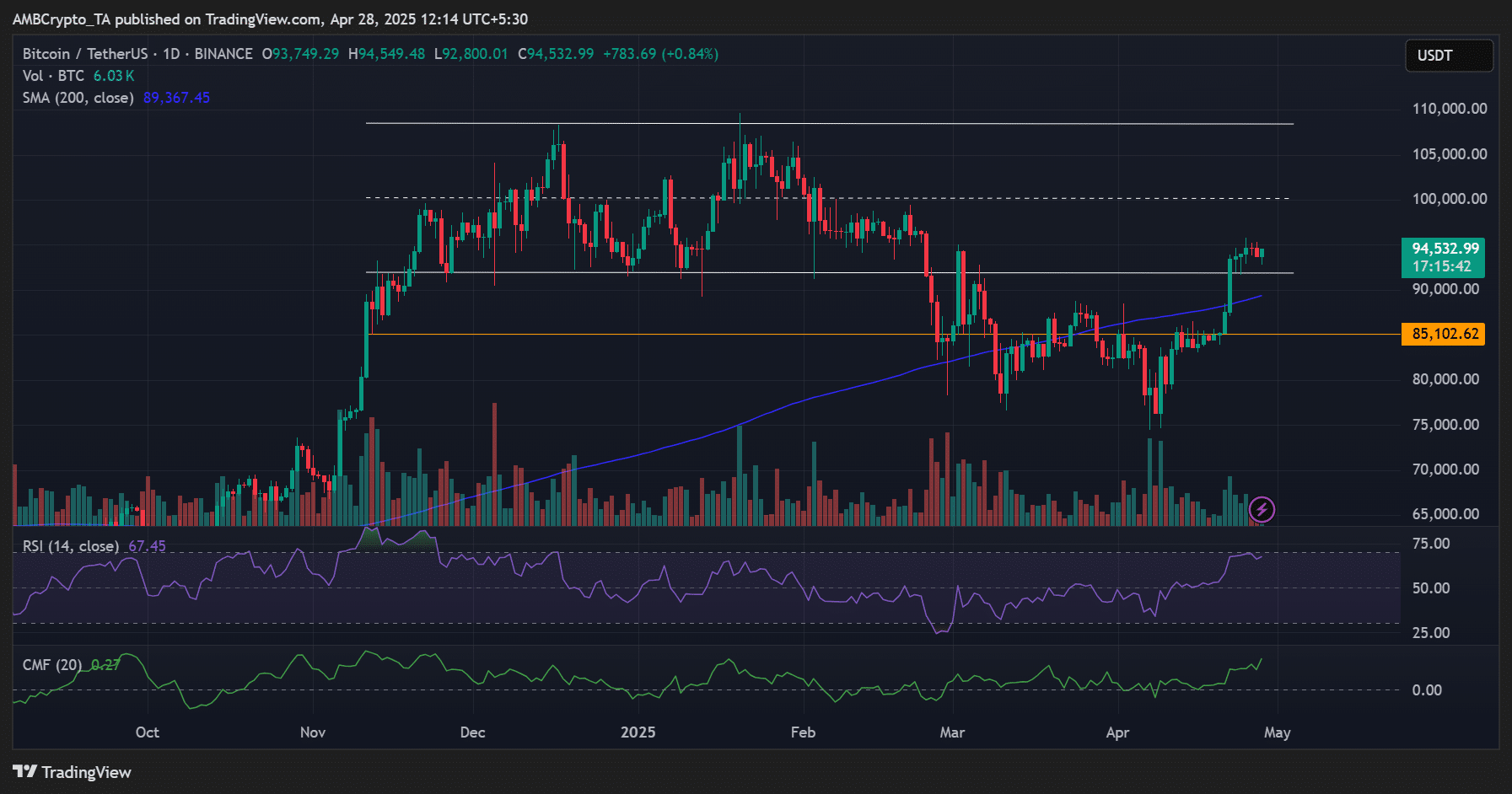| COINOTAG recommends • Exchange signup |
| 💹 Trade with pro tools |
| Fast execution, robust charts, clean risk controls. |
| 👉 Open account → |
| COINOTAG recommends • Exchange signup |
| 🚀 Smooth orders, clear control |
| Advanced order types and market depth in one view. |
| 👉 Create account → |
| COINOTAG recommends • Exchange signup |
| 📈 Clarity in volatile markets |
| Plan entries & exits, manage positions with discipline. |
| 👉 Sign up → |
| COINOTAG recommends • Exchange signup |
| ⚡ Speed, depth, reliability |
| Execute confidently when timing matters. |
| 👉 Open account → |
| COINOTAG recommends • Exchange signup |
| 🧭 A focused workflow for traders |
| Alerts, watchlists, and a repeatable process. |
| 👉 Get started → |
| COINOTAG recommends • Exchange signup |
| ✅ Data‑driven decisions |
| Focus on process—not noise. |
| 👉 Sign up → |
-
Grayscale’s Bitcoin Trust (GBTC) leads annual revenue among Bitcoin ETFs, generating $268M despite a significant decline in its assets under management.
-
Despite recording a staggering 70% drop in AUM since its ETF conversion in January 2024, GBTC continues to outperform all other U.S. spot BTC ETFs.
-
“Nearly 16 months after spot BTC ETFs launched, GBTC still making more $$$ than all of the other ETFs combined…And it’s not even close,” stated Nate Geraci of ETF Store.
This article examines Grayscale’s dominance in the Bitcoin ETF market, revealing key revenue figures and insights into its future amidst declining AUM.
What’s Driving GBTC’s Dominance in the Bitcoin ETF Landscape?
Since its transformation into an ETF in January 2024, Grayscale’s GBTC has experienced heavy outflows, primarily as investors shift toward more cost-effective alternatives such as BlackRock’s iShares BTC ETF. This shift has caused GBTC’s holdings to plummet from approximately 619,000 BTC to only 191,000 BTC — a striking 70% decline in assets under management (AUM).

Moreover, according to recent data shared by Geraci, although GBTC charges the highest annual fee of 1.5%, it still leads in overall revenue generation. In stark contrast, the average cost for other ETFs in the market ranges from 0.15% to 0.94%. Bloomberg ETF analyst Eric Balchunas noted that GBTC’s fee remains comparable to traditional ETFs, making its high revenue all the more remarkable.
| COINOTAG recommends • Professional traders group |
| 💎 Join a professional trading community |
| Work with senior traders, research‑backed setups, and risk‑first frameworks. |
| 👉 Join the group → |
| COINOTAG recommends • Professional traders group |
| 📊 Transparent performance, real process |
| Spot strategies with documented months of triple‑digit runs during strong trends; futures plans use defined R:R and sizing. |
| 👉 Get access → |
| COINOTAG recommends • Professional traders group |
| 🧭 Research → Plan → Execute |
| Daily levels, watchlists, and post‑trade reviews to build consistency. |
| 👉 Join now → |
| COINOTAG recommends • Professional traders group |
| 🛡️ Risk comes first |
| Sizing methods, invalidation rules, and R‑multiples baked into every plan. |
| 👉 Start today → |
| COINOTAG recommends • Professional traders group |
| 🧠 Learn the “why” behind each trade |
| Live breakdowns, playbooks, and framework‑first education. |
| 👉 Join the group → |
| COINOTAG recommends • Professional traders group |
| 🚀 Insider • APEX • INNER CIRCLE |
| Choose the depth you need—tools, coaching, and member rooms. |
| 👉 Explore tiers → |
Interestingly, some investors remain “trapped” in GBTC due to significant tax implications associated with switching to less expensive options. Daniel Sempere, a noted business strategist, highlighted this phenomenon, stating, “Paying the capital gains to switch out of GBTC is more painful than paying the extra fees, I guess.” This emphasizes the complex interplay between AUM, fees, and investor behavior within the ETF ecosystem.
Market Response and Future Outlook for GBTC
Given the ongoing discussions about the potential approval of in-kind redemptions for ETFs, analysts have speculated that such changes could impact GBTC’s market position. Should in-kind redemption be allowed, it would enable investors to use BTC instead of cash during exchanges, significantly reducing tax burdens—particularly relevant for large investors trying to minimize capital gains tax liability.
| COINOTAG recommends • Exchange signup |
| 📈 Clear interface, precise orders |
| Sharp entries & exits with actionable alerts. |
| 👉 Create free account → |
| COINOTAG recommends • Exchange signup |
| 🧠 Smarter tools. Better decisions. |
| Depth analytics and risk features in one view. |
| 👉 Sign up → |
| COINOTAG recommends • Exchange signup |
| 🎯 Take control of entries & exits |
| Set alerts, define stops, execute consistently. |
| 👉 Open account → |
| COINOTAG recommends • Exchange signup |
| 🛠️ From idea to execution |
| Turn setups into plans with practical order types. |
| 👉 Join now → |
| COINOTAG recommends • Exchange signup |
| 📋 Trade your plan |
| Watchlists and routing that support focus. |
| 👉 Get started → |
| COINOTAG recommends • Exchange signup |
| 📊 Precision without the noise |
| Data‑first workflows for active traders. |
| 👉 Sign up → |
However, individual investors with substantial unrealized gains will still face potential tax liabilities if they transition away from GBTC. As of now, GBTC stands at a respectable third place in terms of AUM, large behind BlackRock’s iShares BTC ETF, which boasts $54.8 billion, followed by Fidelity’s FBTC with $18 billion.
Notably, following a slump in Q1 2025, the demand for spot BTC ETFs surged in April, capturing about $3 billion in inflows. This rejuvenation has contributed to a price recovery for Bitcoin, which surged to $94k—marking a 26% increase from its year-low of $74.5k. Investors are now closely monitoring the $92k support level and the critical $100k resistance range for potential market movements ahead.
| COINOTAG recommends • Traders club |
| ⚡ Futures with discipline |
| Defined R:R, pre‑set invalidation, execution checklists. |
| 👉 Join the club → |
| COINOTAG recommends • Traders club |
| 🎯 Spot strategies that compound |
| Momentum & accumulation frameworks managed with clear risk. |
| 👉 Get access → |
| COINOTAG recommends • Traders club |
| 🏛️ APEX tier for serious traders |
| Deep dives, analyst Q&A, and accountability sprints. |
| 👉 Explore APEX → |
| COINOTAG recommends • Traders club |
| 📈 Real‑time market structure |
| Key levels, liquidity zones, and actionable context. |
| 👉 Join now → |
| COINOTAG recommends • Traders club |
| 🔔 Smart alerts, not noise |
| Context‑rich notifications tied to plans and risk—never hype. |
| 👉 Get access → |
| COINOTAG recommends • Traders club |
| 🤝 Peer review & coaching |
| Hands‑on feedback that sharpens execution and risk control. |
| 👉 Join the club → |

Source: BTC/USDT, TradingView
Conclusion
In summary, despite a significant decline in its assets under management, Grayscale’s GBTC remains a formidable player in the Bitcoin ETF landscape, achieving impressive revenue figures. As the market evolves, how GBTC adapts to emerging trends, such as potential in-kind redemptions, will be critical for its sustainability. Investors should remain vigilant about market dynamics and be prepared for potential shifts in the competitive landscape ahead. It’s essential to stay informed and evaluate options carefully in this rapidly changing environment.
| COINOTAG recommends • Members‑only research |
| 📌 Curated setups, clearly explained |
| Entry, invalidation, targets, and R:R defined before execution. |
| 👉 Get access → |
| COINOTAG recommends • Members‑only research |
| 🧠 Data‑led decision making |
| Technical + flow + context synthesized into actionable plans. |
| 👉 Join now → |
| COINOTAG recommends • Members‑only research |
| 🧱 Consistency over hype |
| Repeatable rules, realistic expectations, and a calmer mindset. |
| 👉 Get access → |
| COINOTAG recommends • Members‑only research |
| 🕒 Patience is an edge |
| Wait for confirmation and manage risk with checklists. |
| 👉 Join now → |
| COINOTAG recommends • Members‑only research |
| 💼 Professional mentorship |
| Guidance from seasoned traders and structured feedback loops. |
| 👉 Get access → |
| COINOTAG recommends • Members‑only research |
| 🧮 Track • Review • Improve |
| Documented PnL tracking and post‑mortems to accelerate learning. |
| 👉 Join now → |









